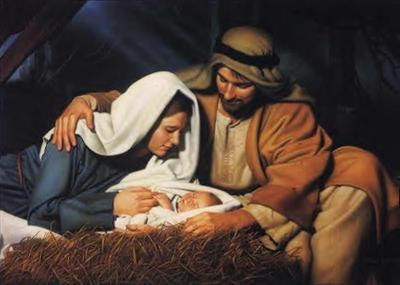El Paso is Bethlehem

According to the second chapter of Luke, Jesus was born in Bethlehem. The popular version of the story tells how Mary and Joseph stayed in a stable because all the inns were filled as people like themselves were forced to travel to places far from home. Why did they stay in a stable? It makes sense that a compassionate innkeeper would let them sleep where there was some shelter. That made it convenient to use a feed trough for animals, and a manger, for the bed of a newborn infant.
Luke’s story is the narrative of refugees, not tourists, having to travel with a woman about to give birth and then seek shelter in an overcrowded destination. The popular story we think is the biblical one is an imaginative expansion of the few details provided by Luke.
Christmas decorations often feature crèche sets with the baby in a manger inside a stable and surrounded by parents and animals. But Luke says nothing about a stable or animals. The account in Luke 2:6-7 says that while they were in Bethlehem, the child was born, and then it was wrapped with improvised covering and placed in a manger because there was no room inside the inn. Then in verse 12, the shepherds are not told about an inn or a stable. They were sent looking for “a child wrapped in bands of cloth and lying in a manger.” The shepherds looked for a couple spending the night outside, as they were doing, who had to improvise to care for a new baby.
The spare details of this birth story emphasize the point that Mary and Joseph were temporary refugees as they reached their destination. Using a manger for a crib leads to assuming they were inside a stable, but it seems more likely they were outside or the stable would have been mentioned. They were Jews from Galilee having to get along as best they could while they had to remain in Judea.
Today there are Bethlehems all over the world as families are forced to leave home environments, travel to places unprepared for them, and find a way to survive on their own. Ukrainian families have sought refuge in neighboring countries for wives and children while husbands remained behind to resist the humanitarian outrages caused by Vladimir Putin’s ego. Muslims and Kurds from Syria, Iraq, and Turkey have caused political turmoil in Europe by trying to escape Russian and Iranian supported violence.
There are also Bethlehems along the Southern border of the United States, but especially in the vicinity of El Paso, Texas. Crowds of political victims from Central and South America and Caribbean nations are joined by peoples from many other nations in a long pilgrimage winding through Mexico to the border of the United States. These people are not invaders. They are on a modern equivalent of the Muslim hajj, a holy pilgrimage seeking peace and safety.
How should Americans treat these modern-day Marys and Josephs, most of whom are bringing young children and risking the journey for the sake of the children? Jesus told a parable about the last judgment in Matthew 25:31-46 that applies to this situation. Israelites were divided into two groups, those who treated others as if they were Jesus and those who failed that test. Refugees of all categories certainly qualify as those in need, as seen by examples in the parable, who should be treated as if they were Jesus himself. But is that how they are being treated?
There are three notable patterns in American treatment of these modern-day Marys and Josephs. First, representatives of the United States government are trying to apply laws that acknowledge rights for these people while defending our border. The system they enforce is outdated and they lack resources to do the job for the large number of people arriving. Their pleas for help have been ignored as the governors of border states team up with members of Congress to oppose improvements as “amnesty” for people they would rather punish and demonize, not assist. Why? Because stirring up the problem and complaining about it brings political success. Any corrective measures involve political risks that immigrant-demonizers will vote them out of power. Staying in office is easier when you blame others for all the things that are wrong.
Unfortunately, there is a second pattern stemming from the refusal to improve the system. Governors have begun putting refugees on buses, promising them something good is about to happen, then dumping them in Northern locations that were not expecting them. These are political stunts that accentuate the disorientation of the refugees and seek to harm Northern locations that have not joined in demonizing the influx of refugees. The governor of Texas directly rejected the Bethlehem message of Jesus by having three busloads of refugees suddenly offloaded on Christmas Eve outside the home of Vice President Kamala Harris.
The third pattern is seen at the border and wherever these refugees are taken as ordinary people respond with humanity and caring to others in need. Large numbers of refugees are being placed in shelters at the border and the larger number huddling against structures for improvised shelter are being assisted by organizations and volunteers of many varieties. When strangers are suddenly dumped in neighborhoods not expecting them, local citizens, non-profits, and government agencies are responding as quickly as possible to ameliorate human suffering.
This Christmas, Bethlehems are popping up all over the United States. Luke’s story of Christmas is honored in Christian church services. Christmas sermons emphasize the poverty and humility of a child and family in need, even though they were especially chosen by God. Isn’t it time we heard all churches emphasize that refugees are children of God and that extending loving care is required of anyone who wants to advance God’s plan for peace on Earth.

